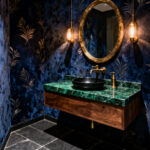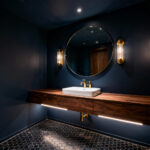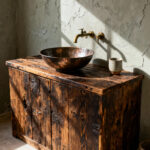Imagine living in a serene haven where the boundaries between work, rest, and rejuvenation seamlessly blend. In the bustling city life of Philadelphia, where space is a precious commodity, creating such a sanctuary within the confines of an apartment bedroom can seem daunting. However, with the right design strategies, even the smallest spaces can be transformed into a harmonious retreat catering to your every need.
As an esteemed interior designer, I have witnessed firsthand the transformative power of zoning—the art of dividing a single room into distinct functional areas. By effectively zoning an apartment bedroom, you can create a space that looks visually appealing and enhances your overall well-being and productivity.
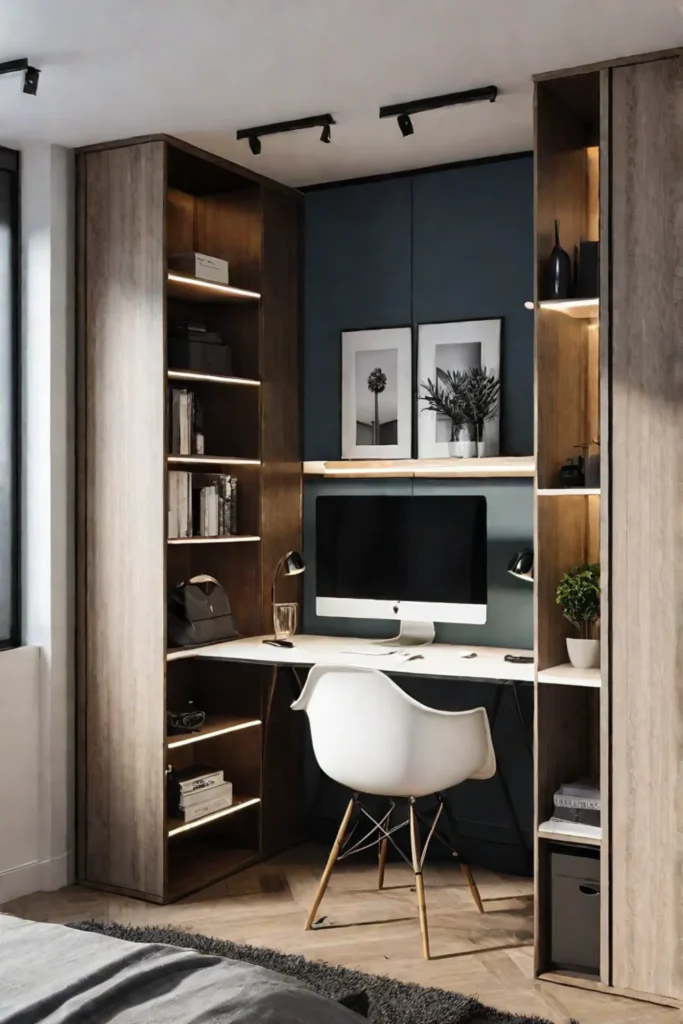
In this article, we will explore the various techniques and design principles that can transform your apartment bedroom from a studio-like setup into a true sanctuary. From defining zones to maximizing storage and incorporating personal touches, we will delve into the intricacies of creating a space that reflects your unique lifestyle and fosters a sense of balance and tranquility.
Defining Zones: The Foundation of a Harmonious Space
Establishing clear zones within the apartment bedroom is the foundation for a well-organized and visually appealing space. By identifying the key functional areas – sleeping, working, and relaxing – you can create a seamless flow and a sense of order that enhances your overall living experience.
The benefits of zoning the apartment bedroom extend far beyond aesthetics. According to numerous psychological studies, a well-defined living space can profoundly impact productivity, relaxation, and overall mental well-being. By separating the areas dedicated to work from those meant for rest and rejuvenation, you can maintain a healthy work-life balance and prevent the boundaries from blurring.

Techniques for physically and visually separating zones can range from the strategic placement of furniture and room dividers to the thoughtful use of color schemes and lighting. For instance, a strategically positioned bookshelf or a decorative screen can effectively delineate the working area from the sleeping zone. At the same time, a warm color palette and soft lighting can create an inviting atmosphere in the relaxation area.
Moreover, zoning isn’t a new concept; it has been a part of interior design for centuries. From the canopy beds of the Renaissance era to the parlors of Victorian homes, designers have long recognized the importance of creating distinct spaces within a single room. Drawing inspiration from these historical examples, we can infuse our modern apartment bedrooms with timeless elegance and functionality.
Sleeping Zone: The Sanctuary Within
The sleeping zone is at the heart of every bedroom – a sanctuary where we retreat to recharge and rejuvenate. In the limited confines of an apartment, designing a restful and inviting sleeping area requires careful consideration of various elements, from bed size and bedding to nightstands and lighting.
The bed is the focal point of the sleeping zone, and selecting the right size and style is crucial. For smaller apartments, a platform bed with built-in storage can be a space-saving solution, while a luxurious upholstered headboard adds sophistication and comfort. When it comes to bedding, opt for high-quality materials that look beautiful and promote restful sleep, such as crisp cotton sheets and plush duvets.
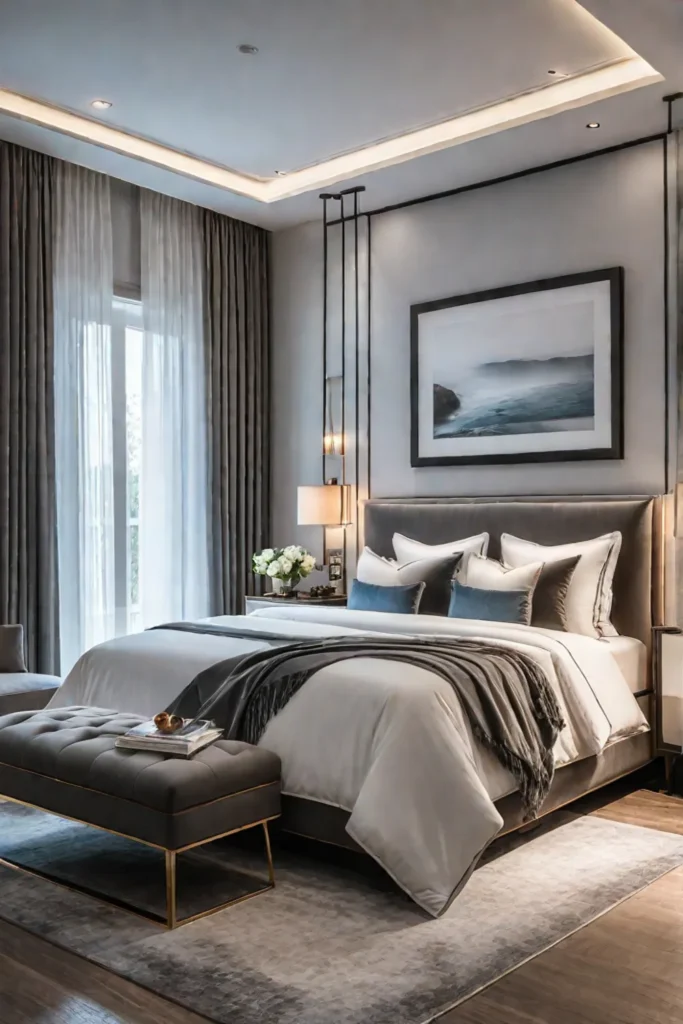
Lighting is pivotal in creating a calming atmosphere in the sleeping zone. Soft, dimmable lamps or sconces can provide a warm, ambient glow, while blackout curtains or shades can help block out unwanted light for a peaceful slumber. Additionally, incorporating biophilic design elements, such as natural materials and textures, can enhance the serene ambiance and promote a sense of connection with nature.
By visually and physically separating the sleeping zone from the rest of the bedroom, you create a dedicated space for rest. This can be achieved by strategically placing furniture, such as a freestanding screen or a room divider, or by utilizing color and texture to define boundaries.
Working Zone: Striking a Balance
In the modern era of remote work and flexible schedules, the apartment bedroom has taken on an additional role – that of a home office. Effectively zoning the working area is crucial for maintaining a healthy work-life balance and ensuring high productivity while minimizing distractions.
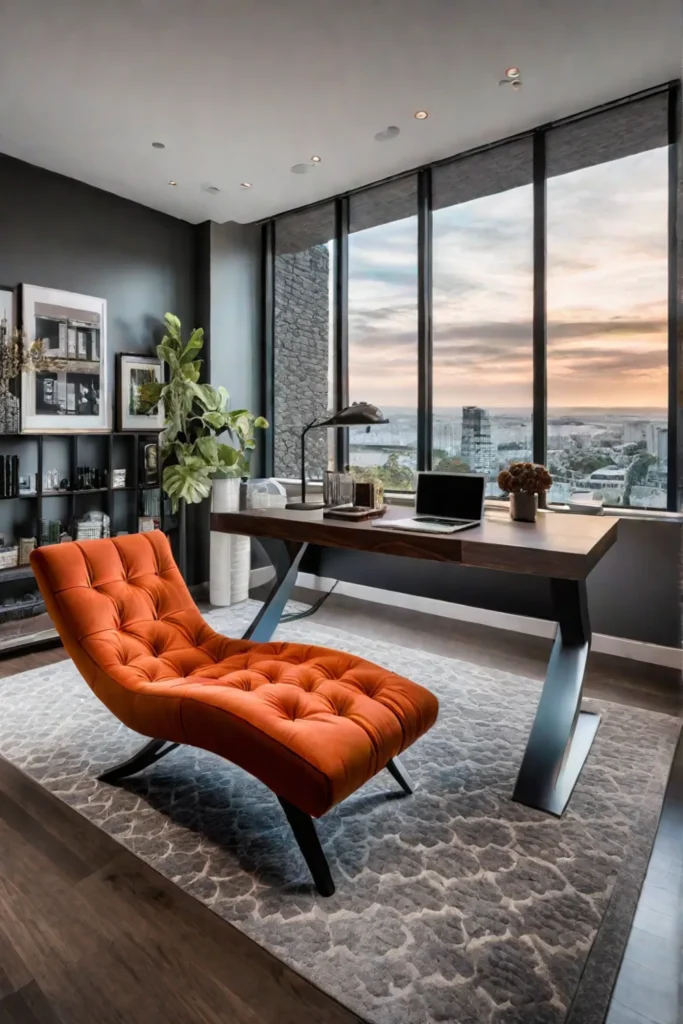
Separating the working and sleeping zones is essential to prevent the lines between professional and personal life from blurring. This can be achieved by strategically placing furniture, such as a desk or a dedicated workstation, or by utilizing room dividers or screens to create a physical barrier between the two areas.
Ergonomics and functionality should be top priorities when selecting furniture for the working zone. A comfortable, adjustable chair and a desk that promotes proper posture can go a long way in preventing aches and pains associated with prolonged sitting. Additionally, ample storage solutions, such as shelves or cabinets, can help keep the workspace organized and clutter-free, fostering a sense of calm and focus.
Lighting and color schemes are crucial in creating a focused and productive work environment within the apartment bedroom. Cool, crisp tones and ample task lighting can help stimulate concentration, while warm hues and soft ambient lighting can be incorporated into the relaxation zone for a soothing contrast.
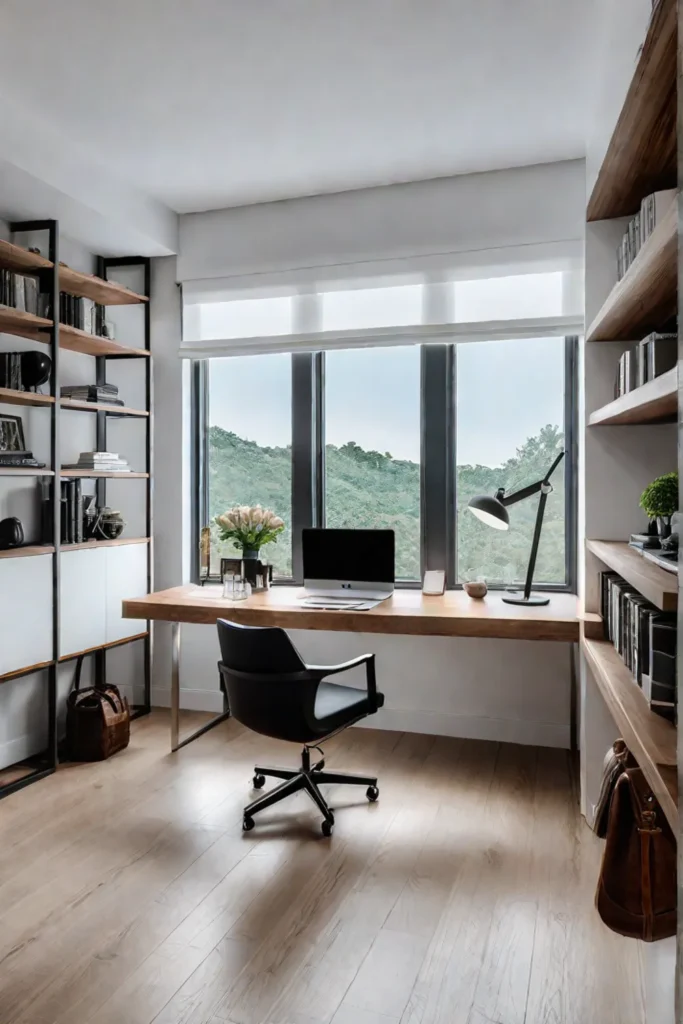
By embracing the principles of minimalism in the working zone, you can create a clean and streamlined space that minimizes visual distractions and promotes a sense of order. Concealing or integrating the working area into the overall bedroom design can also help maintain a cohesive aesthetic when the space is unused.
Relaxation Zone: A Sanctuary for Rest and Rejuvenation
In addition to the sleeping and working zones, the apartment bedroom should include a dedicated relaxation area. In this sanctuary, you can unwind, indulge in leisure activities, and recharge your batteries. This zone counterbalances the more functional areas, providing a space for rest and rejuvenation.
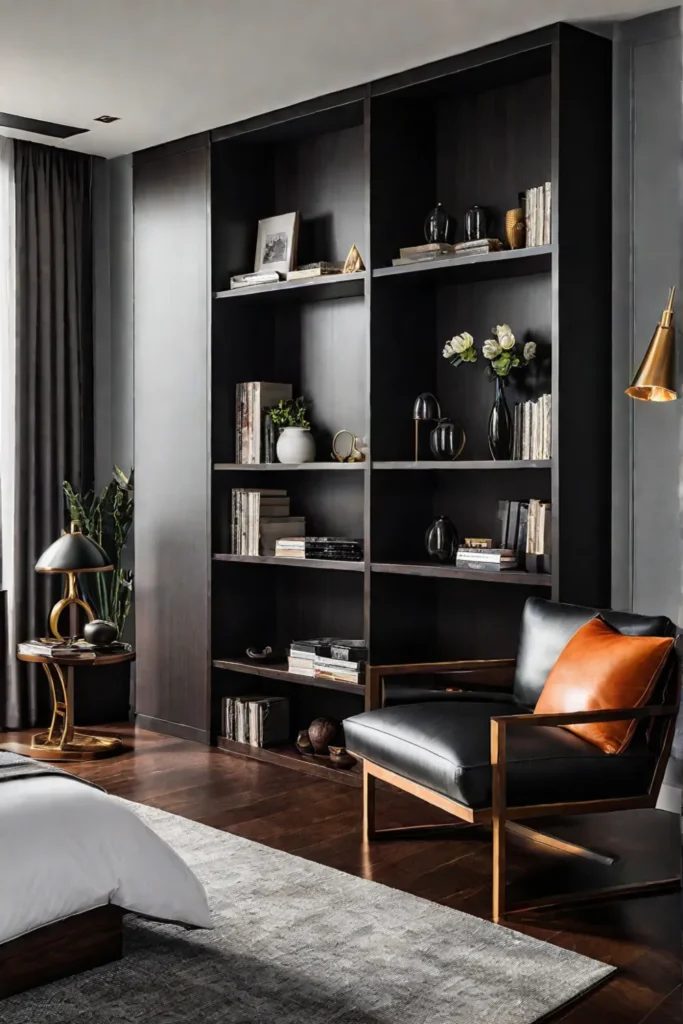
Defining and furnishing the relaxation zone requires careful consideration of both form and function. Comfortable seating options, such as plush armchairs or a cozy chaise lounge, can create an inviting atmosphere for reading, meditating, or simply enjoying a moment of tranquility. Soft textiles like throw blankets and plush rugs can further enhance comfort and warmth.
Lighting plays a crucial role in setting the ambiance of the relaxation zone. Dimmable lamps or candles can create a soothing, calming glow, while strategically placed accent lighting can highlight decorative elements or artwork, adding depth and interest to the space.
Incorporating biophilic design elements, such as indoor plants or nature-inspired artwork, can further enhance the sense of serenity and connection with the natural world. The growing trend of incorporating wellness elements into home design has also led to integrating features like essential oil diffusers or salt lamps, promoting a holistic approach to relaxation.
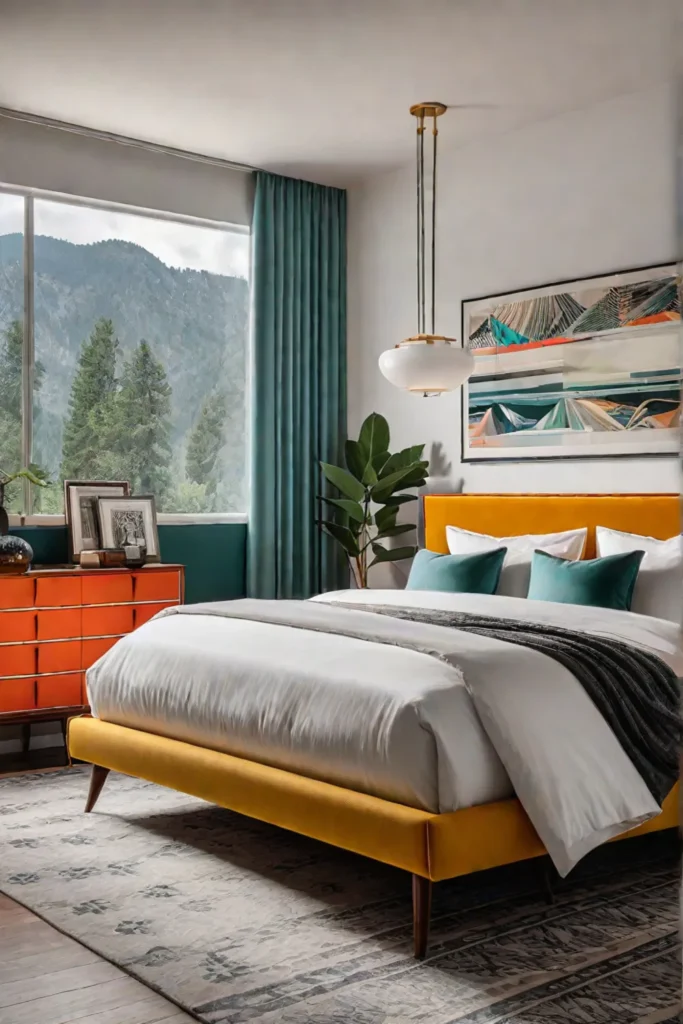
By designing the relaxation zone to transition between day and night use seamlessly, you can create a versatile space that adapts to your changing needs. For example, a comfortable daybed or a window seat can serve as a cozy reading nook during the day and a peaceful retreat for stargazing or meditation in the evening.
Zoning with Furniture and Room Dividers
Furniture placement and the strategic use of room dividers are powerful tools for defining distinct zones within the apartment bedroom. Creating visual and physical boundaries can help delineate the various functional areas while adding depth and interest to the overall design.
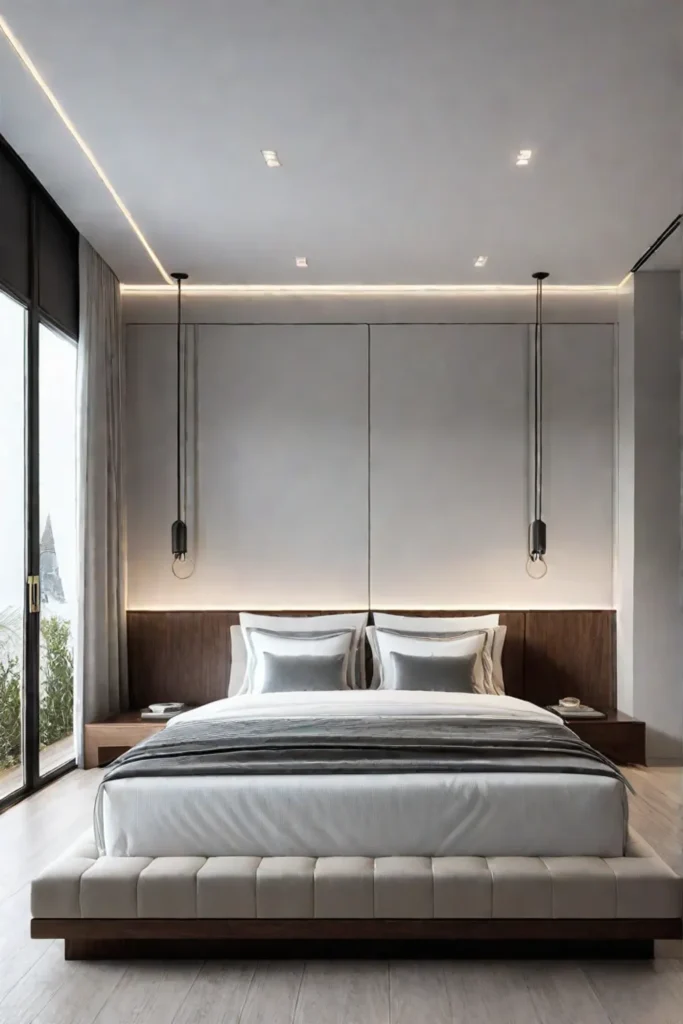
The role of furniture in zoning cannot be overstated. A strategically placed armoire or a tall bookcase can effectively separate the sleeping zone from the working area. At the same time, a low-profile console table or a bench can subtly define the boundaries of the relaxation zone. Modular and multifunctional furniture pieces, such as nesting tables or ottomans with built-in storage, can further enhance the versatility and organization of zoned spaces.
Whether freestanding or mounted, room dividers offer a flexible and visually appealing solution for separating zones. From classic folding screens to modern, minimalist panels, these elements can be tailored to complement the overall design aesthetic while providing a sense of privacy and separation when needed.
When selecting furniture and room dividers, consider incorporating natural elements, such as woven textures or wooden accents, to create a warm and inviting atmosphere. These organic materials can also help bridge the gap between indoor and outdoor environments, promoting harmony and connection with nature.
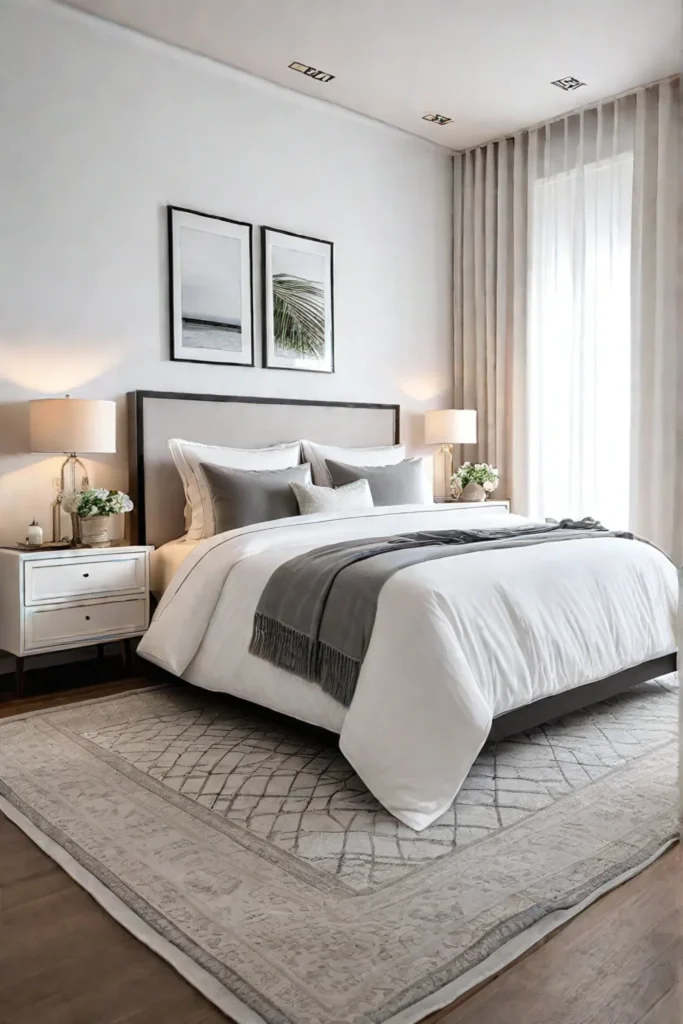
The placement of furniture and room dividers should also consider the flow and circulation within the apartment bedroom. By strategically positioning these elements, you can create natural pathways that guide movement and enhance the overall functionality of the space.
Color and Lighting Strategies: Defining and Enhancing Zones
Color schemes and lighting techniques are crucial in defining and enhancing the distinct zones within the apartment bedroom. These design elements can influence our perception of space, mood, and overall ambiance, making them invaluable tools in creating a harmonious and visually appealing zoned environment.
The impact of color on the perception of space and mood is well-documented in psychology and interior design. Cool tones, such as blues and greens, can create a sense of calm and tranquility, making them ideal for sleeping and relaxation zones. Warmer hues, like reds and oranges, can stimulate energy and focus, making them suitable for the working area.
Using color to visually separate zones allows you to create a cohesive design that flows seamlessly from one area to another. For example, a rich, deep blue accent wall can anchor the sleeping zone, while a warm, earthy tone can define the working area, creating a natural transition between the two spaces.
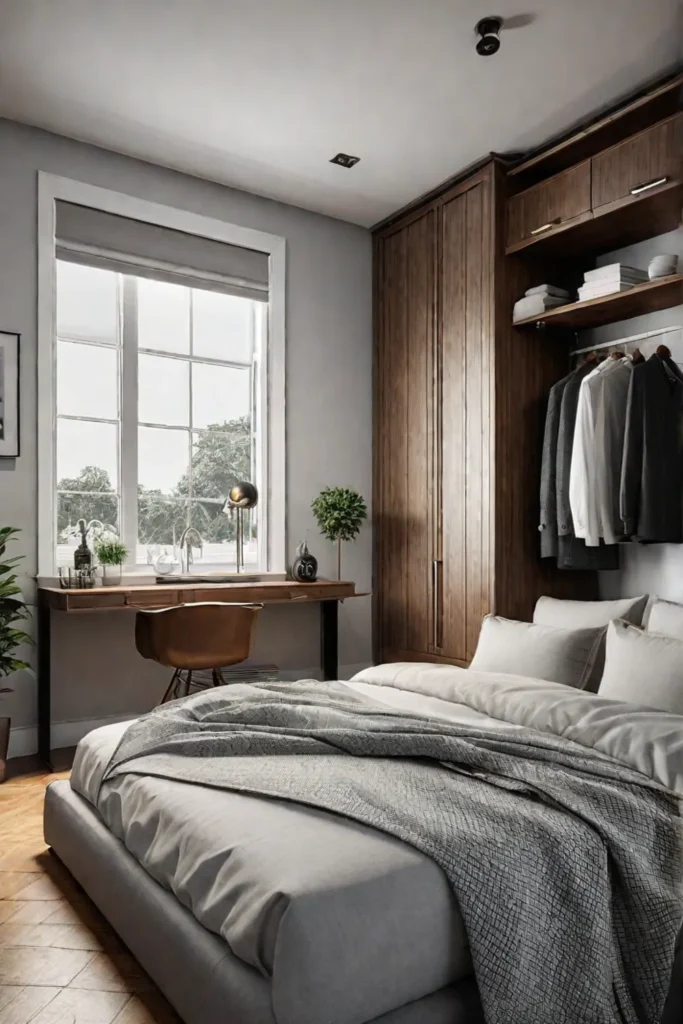
Lighting techniques can also be crucial in delineating and highlighting the various zones within the apartment bedroom. Task lighting, such as desk lamps or adjustable spotlights, can create a focused and productive environment in the working zone. In contrast, ambient lighting, such as floor lamps or wall sconces, can create a warm and inviting atmosphere in the relaxation area.
Incorporating accent lighting, such as recessed or track lighting, can add depth and dimension to the zoned spaces, highlighting architectural features or artwork and creating visual interest.
When selecting color palettes and lighting solutions, consider the principles of color theory and energy efficiency. Incorporating smart home technology, such as voice-controlled lighting systems or customizable color-changing bulbs, can further enhance the zoning and functionality of the apartment bedroom, allowing you to transition between different moods and atmospheres effortlessly.
Maximizing Storage and Organization
In the limited space of an apartment bedroom, effective storage and organization solutions are crucial for maintaining a clutter-free and harmonious zoned environment. By incorporating multifunctional and space-saving storage elements into the various zones, you can enhance the overall functionality of the space and contribute to a visually streamlined and cohesive design.
The sleeping zone offers numerous opportunities for integrated storage solutions. Platform beds with built-in drawers or ottomans at the foot of the bed can provide ample space for storing linens, clothing, or personal items. Nightstands with drawers or shelves can also help keep essential items within reach while keeping the space tidy.
Incorporating a desk with built-in cabinets or shelving units in the working zone can help keep office supplies, documents, and technology organized and out of sight. Wall-mounted shelves or pegboards can also provide a versatile and visually appealing solution for storing and displaying items.
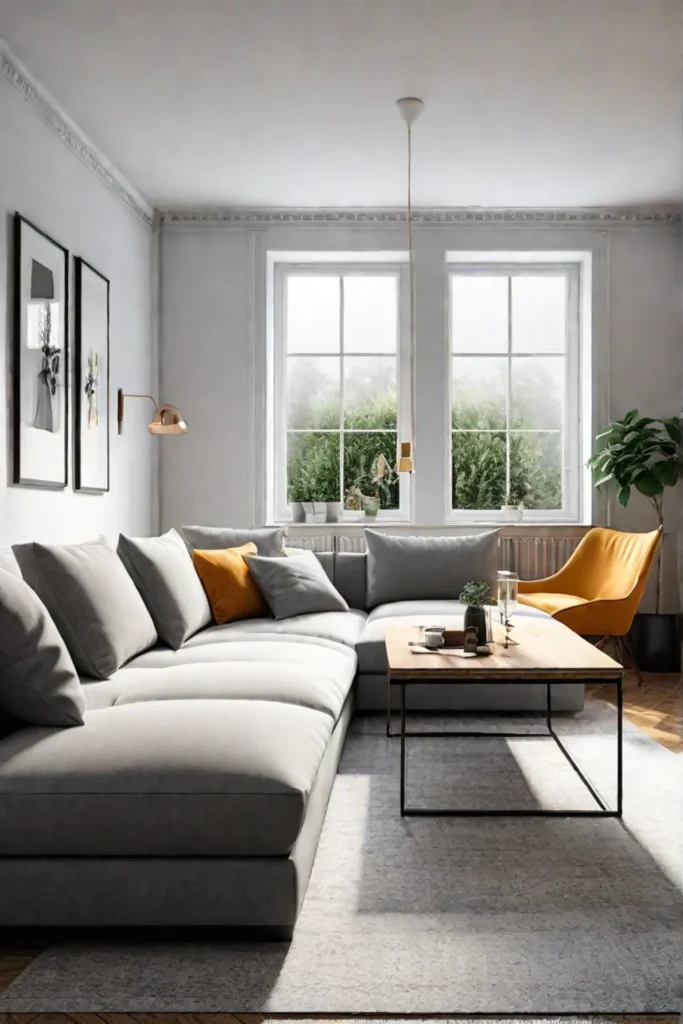
Hidden storage solutions, such as ottomans with removable lids or built-in cabinets beneath window seats, can benefit the relaxation zone. These elements not only provide ample storage space but also contribute to the area’s overall aesthetic and functionality.
When selecting storage solutions, consider incorporating natural materials and textures, such as woven baskets or wooden crates, to add warmth and character to the zoned spaces. These elements can also help tie the overall design together, creating a cohesive and visually appealing environment.
Embracing the principles of minimalism and decluttering can further enhance the perception of space and organization within the zoned apartment bedroom. Regularly evaluating and purging unnecessary items can create a sense of order and tranquility, allowing the various zones to shine and serve their intended purposes.
Personalizing the Zoned Bedroom
While zoning the apartment bedroom is crucial for functionality, infusing the space with personal touches and unique design elements that reflect your style and personality is equally important. By balancing functionality and individual expression, you can create a space that meets your practical needs, resonates with your individuality, and fosters a sense of belonging.
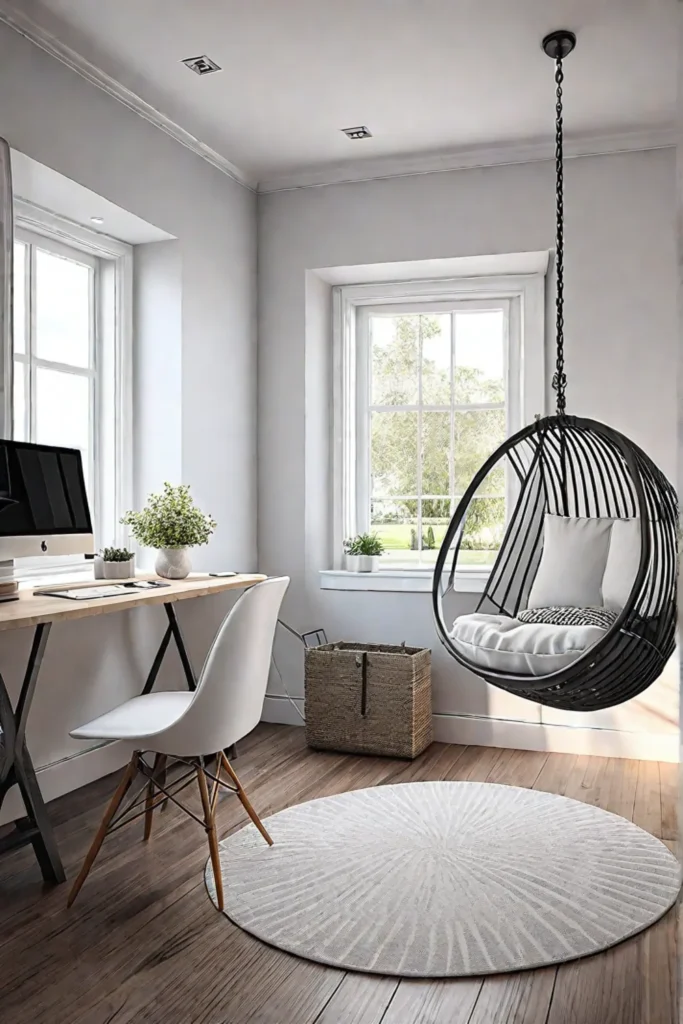
Incorporating personal artwork, photographs, and memorabilia into the zoned apartment bedroom is a simple yet powerful way to add depth and character to the space. These elements can be strategically placed throughout the various zones, serving as focal points or subtle accents that tell the story of your life and experiences.
A gallery wall featuring family portraits or cherished travel mementos can create a warm and inviting atmosphere in the sleeping zone. At the same time, a beloved artwork can add a personal touch to the relaxation area.
When selecting decorative elements, consider their placement and arrangement in the overall design and zoning of the space. A well-curated collection of objects or a thoughtfully arranged vignette can enhance each zone’s visual interest and cohesiveness while also reflecting your unique style and personality.
Incorporating biophilic design elements, such as indoor plants or nature-inspired artwork, can also add a personal touch while promoting a sense of connection with the natural world. These elements can be tailored to your individual preferences and contribute to the zoned spaces’ overall ambiance and well-being.
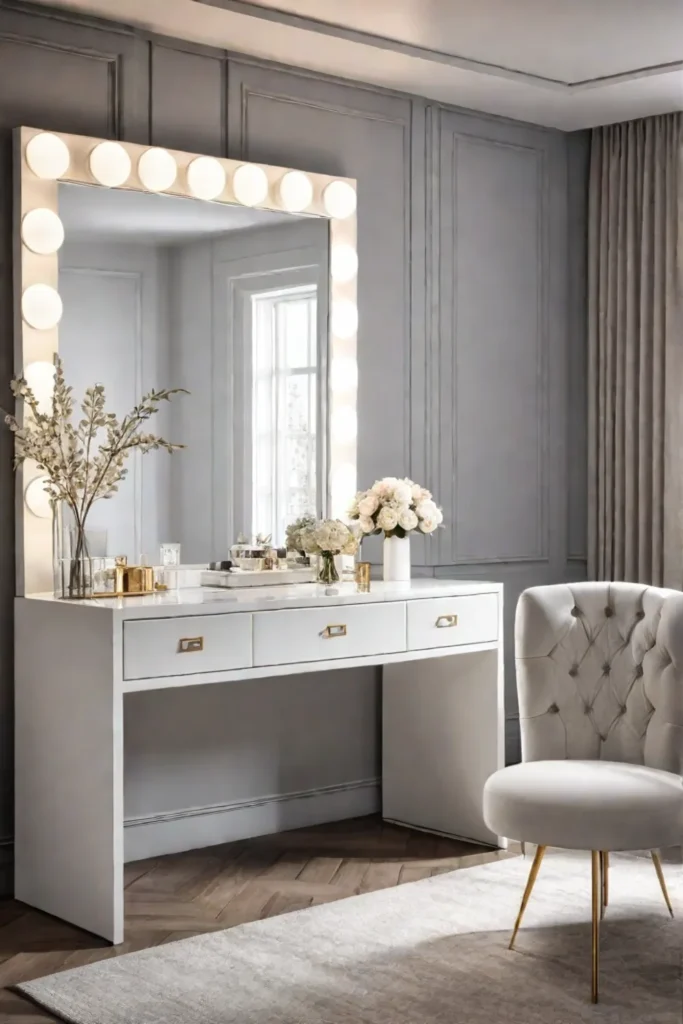
By embracing sustainable and eco-friendly design principles, you can further personalize the zoned apartment bedroom while positively impacting the environment. Incorporating recycled or repurposed materials, such as vintage furniture or upcycled decor, can add character and uniqueness to the space while reducing your carbon footprint.
Conclusion
Creating distinct zones within the apartment bedroom is a fundamental design strategy that transforms the space from a studio-like setup into a harmonious haven. By effectively defining the sleeping, working, and relaxation areas and leveraging furniture, room dividers, color, and lighting, you can create a functional and visually appealing bedroom that caters to your needs and preferences.
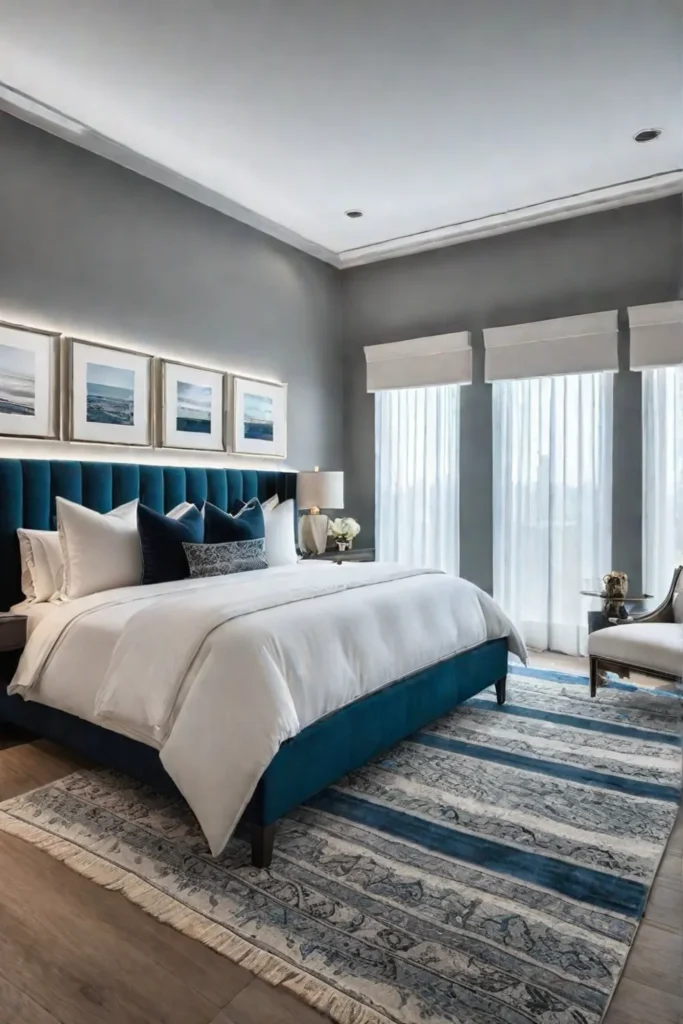
Through careful attention to storage and organization, the zoned apartment bedroom can become a clutter-free sanctuary, promoting a sense of order and tranquility. By incorporating personal touches and unique design elements, you can infuse the space with your style and personality, creating an environment that reflects your individuality and enhances your overall living experience.
Embrace the art of zoning, and let your apartment bedroom become a sanctuary where work, rest, and rejuvenation coexist in perfect harmony. With thoughtful design and a touch of creativity, even the smallest spaces can be transformed into a true oasis, a haven where you can retreat, recharge, and embrace the essence of home.

